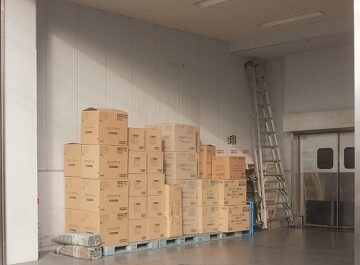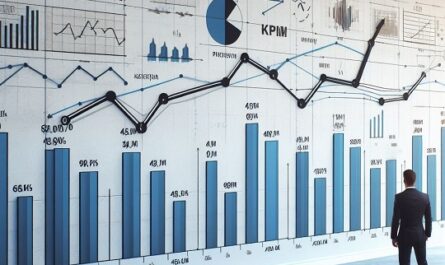In the world of buying goods, procurement professionals face a big challenge: the prices of raw materials can go up and down a lot. This uncertainty makes it hard for them to decide when to buy things. They’re stuck between wanting to get good prices and not wanting to lose money. It’s like a game of balancing act where they have to be really careful with their decisions.
Before we go further into this topic, don’t forget to follow my LinkedIn account. You’ll get more helpful insights on supply chain management there.
Table of Contents
The Challenge of Price Volatility
Procurement pros face a big challenge: raw material prices keep changing a lot, and it’s tough to predict. These price swings happen fast and are caused by many things like changes in demand, supply chain issues, or even world events like conflicts or economic changes.
This uncertainty makes it hard for them to decide when to buy things they need. If they buy too early, they might end up paying too much if prices drop later. But waiting too long could mean missing out on good prices or facing even higher costs in the future.
Making matters more complicated, these price changes affect the whole buying process. Procurement professionals have to figure out the best time to make purchases, which is tricky with prices constantly moving.
It’s like walking a tightrope between getting good deals and avoiding losing money. They need to be really smart about analyzing the market, predicting potential problems, and considering global factors like politics and economics to make the best decisions.
To handle this rollercoaster of prices, procurement pros need to be strategic. They have to keep a close eye on market trends, stay prepared for disruptions, and factor in all kinds of economic and political factors. But they’re not alone in this.
By diversifying their suppliers, negotiating flexible contracts, and using tools like hedging, they can minimize risks and make sure their buying decisions are as smart and effective as possible in this unpredictable landscape.
The Dilemma: To Buy or Not to Buy
Procurement professionals often face a tough choice: should they buy things now or wait for prices to change? Buying now seems safe as it keeps the supply chain running smoothly. But there’s a worry that prices might drop soon, causing the company to pay too much.
On the other hand, waiting for better prices might seem smart, but it could lead to delays and higher costs down the line. This decision isn’t just about money—it affects how well the company can serve its customers and meet its goals.

Buying now is like playing it safe. It ensures the company gets what it needs without risking any disruptions. But there’s always the fear of paying too much if prices go down soon after.
Waiting for better prices might sound tempting, but it comes with its own risks. It could mean missing out on opportunities or facing higher costs later. Procurement professionals have to think about how their decision will impact the company’s operations and its ability to meet customer needs.
In the end, the decision to buy now or wait depends on a lot of factors. Procurement professionals have to analyze the market, consider the company’s goals, and decide how much risk they’re willing to take.
By weighing the pros and cons carefully, they can make informed decisions that help the company save money while keeping the supply chain running smoothly.
Balancing Price and Quantity
Procurement professionals face a tricky task of balancing both price and quantity when buying raw materials. They want to get the best prices to save money and boost profits. This means negotiating with suppliers to lock in good prices that fit the company’s budget.
But it’s not just about the price—procurement pros also need to make sure they have enough raw materials to keep the business running smoothly.
However, getting the right price and quantity isn’t always easy. Suppliers might hesitate to agree to set prices or quantities because of concerns about market changes or production limits.
This adds another layer of complexity to the procurement process, where professionals must juggle between the company’s need for stable prices and suppliers’ desire for flexibility and risk management.
To tackle this challenge, procurement professionals need to work closely with suppliers. They should build strong relationships based on trust and communication, understanding each other’s needs and goals. By collaborating effectively, they can reach agreements that satisfy both parties, ensuring a steady supply of materials at reasonable prices.
Additionally, using tools like data analysis helps them forecast demand, optimize inventory, and track pricing trends, making smarter decisions aligned with the company’s objectives.
You might also like:
- 5 Tips for Overcoming the Challenges of Assessing Quality as a Procurement Officer
- 10 Strategies to Overcome Data Processing Challenges for Supply Chain Teams Lacking Expertise
Contract vs. Market Prices: A Dilemma
Procurement professionals often face a big decision: should they sign a contract with a vendor or just follow market prices? Each choice has its pros and cons, so they need to think carefully about what’s best for their organization.
Signing a contract can provide stability in prices and make sure they get the materials they need on time. But it might limit their flexibility to change plans if market conditions shift.

On the other hand, following market prices gives them more freedom to adapt, but it also means they’re exposed to the ups and downs of price changes.
Choosing a contract means locking in prices and ensuring a steady supply of materials, which can be reassuring. But it could mean missing out on better deals if prices drop later.
On the flip side, following market prices allows for more flexibility to take advantage of good deals as they come. However, it also means they have to deal with the uncertainty of price fluctuations, which could lead to unexpected costs.
Deciding between a contract and market prices isn’t easy. Procurement professionals have to consider factors like how much risk their organization can handle and what their long-term goals are.
They might also use strategies like adding clauses to contracts or working with multiple suppliers to manage risks. Whatever they choose, it’s important that it fits with their organization’s needs and priorities.
Strategies for Mitigating Risk
Dealing with changing raw material prices needs smart plans to reduce risks. Procurement professionals can use different tactics to do this.
Market Intelligence
Keeping up with what’s happening in the market is really important for procurement professionals. They need to know about trends, forecasts, and geopolitical stuff to anticipate changes in prices and make smart decisions.
Market trends give them clues about supply and demand, which helps them figure out where prices might be headed. By paying attention to things like commodity prices, how much stuff is in stock, and predictions about production, they can adjust their plans and take advantage of good prices.
Forecasting is a big part of what procurement professionals do. It’s like looking into the future to see what prices might do. They use fancy math and industry knowledge to predict how much raw materials will cost down the road.

These predictions help them make plans, negotiate contracts, and prepare for any surprises that might pop up. They also think about different scenarios, like what could happen if there’s a big change in the market, so they’re ready for anything.
Geopolitical stuff, like trade disputes or natural disasters, can shake up the market too. Procurement professionals need to keep an eye on these things because they can affect prices and supply chains.
By staying on top of what’s going on around the world, they can spot potential problems early and come up with ways to keep things running smoothly. In the end, staying informed helps procurement professionals make smart decisions that keep their organization strong and ready for whatever comes their way.
Supplier Diversification
Diversifying suppliers is super important for procurement pros to lower risks. Relying on just one supplier can cause lots of problems like disruptions in the supply chain, bad quality, or prices jumping up and down.
By working with different suppliers, procurement pros spread out the risk, so if one supplier has a problem, it doesn’t mess up everything. This makes the supply chain stronger and helps protect against unexpected events like disasters or changes in rules that could mess up one supplier.
Having lots of suppliers also gives procurement pros more power when they’re talking to suppliers. When suppliers know there are other options, they’re more likely to offer better deals to win the business.
This competition between suppliers means better prices, better payment terms, and better service for the organization. Plus, having options lets procurement pros switch between suppliers easily if one isn’t doing a good job or if prices change, helping keep things running smoothly.
Not just that, diversifying suppliers also brings in new ideas and helps the organization get better. Working with different suppliers brings in fresh perspectives and new ways of doing things, which leads to more creativity and innovation.
Plus, it helps the organization stay ahead of the competition by accessing a wider range of products and technologies. And by working with diverse suppliers, the organization shows it cares about inclusivity and social responsibility, which is good for its reputation and values.
You might also like:
- 10 Ways Supply Chain Management Can Contribute to Business Profits
- 10 Strategies to Succeed in Supply Chain without Formal Education
Flexible Contracts
Negotiating flexible contracts is super important for procurement pros in unpredictable markets. Rigid contracts can cause big problems when prices change quickly or supplies run short.
Flexible contracts with price adjustments let procurement pros change costs based on what’s happening in the market, so the organization doesn’t end up overpaying or running out of stuff. By setting clear rules for adjusting prices using benchmarks, everyone knows what’s fair and transparent, which helps avoid surprises.

Having a minimum quantity guarantee in flexible contracts is like having a safety net. It ensures the organization gets at least a certain amount of materials even if things get tough, like if there’s a supply problem or demand suddenly changes.
This guarantee gives peace of mind while still allowing flexibility to adjust prices as needed. It’s all about finding the right balance between having enough stuff to keep things running smoothly and not paying more than necessary.
Making these flexible contracts work requires teamwork and communication between buyers and suppliers. Building strong relationships based on trust and shared goals helps everyone work together to find solutions.
Keeping an eye on the market and regularly reviewing contracts ensures they stay fair and effective. With flexible contracts and good teamwork, procurement pros can navigate volatile markets and keep things running smoothly for the organization.
Hedging Strategies
Using hedging instruments like futures contracts or options is a smart way for procurement professionals to deal with price changes in the market. These tools let organizations lock in prices for future purchases, which helps protect them from sudden price jumps.
With futures contracts, buyers can agree on a price for materials they’ll need later, keeping costs predictable. Options give buyers the choice to buy or sell materials at a set price within a certain time, giving them flexibility and protection if prices go against them.
By using hedging instruments, procurement professionals can keep their costs steady even when the market gets unpredictable. It helps them plan their budgets better and manage risks more effectively.
Plus, it gives them the freedom to grab good deals in the market while still staying safe from unexpected price increases. This approach helps organizations stay competitive and make sure they’re making the most of their procurement budgets.

But using hedging instruments isn’t without its challenges. It comes with costs like premiums or margins, which can add up. Also, how effective it is depends on factors like how easy it is to trade these instruments and how accurate price forecasts are.
So, procurement professionals need to think carefully and do thorough analysis before using hedging to make sure it’s the right move for their organization. Overall, though, using hedging instruments can be a powerful way to manage risks and make smart procurement decisions even in uncertain markets.
Conclusion
Procurement pros work in a world where raw material prices go up and down a lot, and things can change fast. But instead of just seeing this as a problem, they can turn it into a chance to make smart decisions and add value to their organization.
By keeping an eye on what’s happening in the market, building good relationships with suppliers, and being proactive about managing risks, procurement pros can handle the ups and downs of raw material prices and make sure their organization keeps moving forward and creating value.
I hope you find it helpful!
Please share this article with your colleagues so they can also benefit. For more insights on supply chain management, follow my LinkedIn account. You’re free to use all articles on this blog for any purpose, even for commercial use, without needing to give credit.

 by
by 

